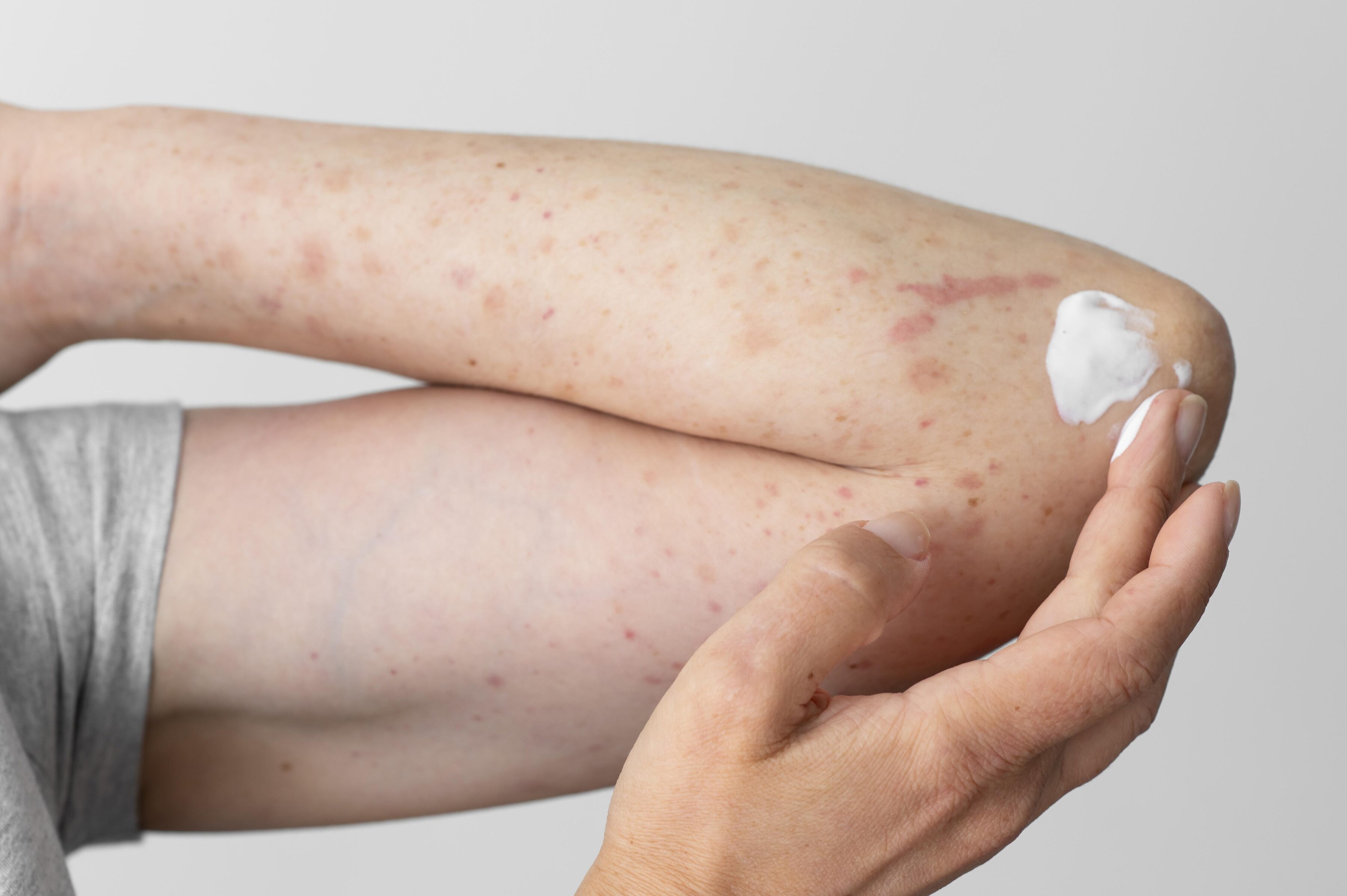Almost everyone experiences a skin rash at some point – whether it’s an itchy patch that appears out of nowhere, a sudden heat rash on a hot day, or a more persistent condition like eczema. While most rashes are harmless, knowing what’s behind the redness and bumps can help you treat it correctly and know when it’s time to see a doctor.

Why Rashes Happen
A rash is your skin’s way of signaling irritation or infection. Some of the most common triggers include:
- Irritants and Allergens– Detergents, perfumes, metals or even certain plants can cause contact dermatitis, leading to redness, small blisters, and itching.
- Heat and Sweat– Hot, humid weather can block sweat glands and result in prickly heat (also called heat rash).
- Infections- Fungal infections like tinea (ringworm) or candida (thrush) cause ring-shaped or patchy rashes. Viral infections, such as chickenpox or measles, can also show up as itchy spots.
- Chronic Conditions- Eczema and psoriasis are long-term inflammatory conditions that flare up when the immune system is triggered by stress, allergies, or changes in climate.
What it Looks and Feels Like
Rashes differ depending on their cause:
- Itchy, red, inflamed skin– Common with eczema and allergic reactions.
- Raised rings or scaly patches– Often a sign of fungal infections.
- Tiny fluid-filled blisters– May appear with chickenpox or impetigo.
- Pink or prickly bumps– Typical of heat rash.
Pay attention to how fast the rash spreads, whether it oozes or forms crusts, and if you have other symptoms like fever- these details help a healthcare provider identify the problem.
Self- Care Tips
For mild rashes without signs of infection, you can often manage symptoms at home:
- Cool It Down: Take lukewarm showers and avoid heavy clothing.
- Soothe the Skin: Apply a gentle, fragrance -free moisturizer or oatmeal bath to reduce dryness and itching.
- Avoid Triggers: Skip harsh soaps, scented detergents, or anything you suspect caused the rash.
- Resist Scratching: Scratching can break the skin and invite infection. Keep nails short and clean.
When to Seek Medical Help
See a doctor if:
- The cause is unclear, or the rash covers a large area.
- You have fever, pain, or pus.
- The rash doesn’t improve in a few days with self-care.
- You suspect a contagious infection (like chickenpox, measles, or impetigo).
Prompt treatment is especially important for infants, pregnant women, and anyone with a weakened immune system.
A Quick Word on Prevention
- Wear light, breathable cotton clothing in hot weather.
- Use mild, fragrance-free cleansers and detergents.
- Keep your skin hydrated with regular moisturizing.
- Stay up to date on vaccinations to protect against illnesses such as measles and rubella.
A rash is usually your skin’s way of asking for attention. Simple steps- like avoiding irritants, cooling the skin, and moisturizing- often bring relief. But if a rash worsens or you’re unsure of its cause, consult a healthcare professional for the right diagnosis and treatment.
Quick, Convenient Help with Dr Kart
Need professional advice but don’t have time for the clinic visit? Dr Kart’s 24/7 healthcare vending machines– including our location at Shell Tampines Ave 2– connect you instantly with a licensed doctor for an on-the-spot video consult.

Relevant non-POM products for relieving skin rash:
- Axcel Hydrocortisone 1% cream
- Axcel Fungicort Cream
- Chlorpheniramine 4mg Tablets
- Axcel Cetirizine-5 Syrup
- Zyrtec-R Solution
*Other Prescription Medications are also available.




